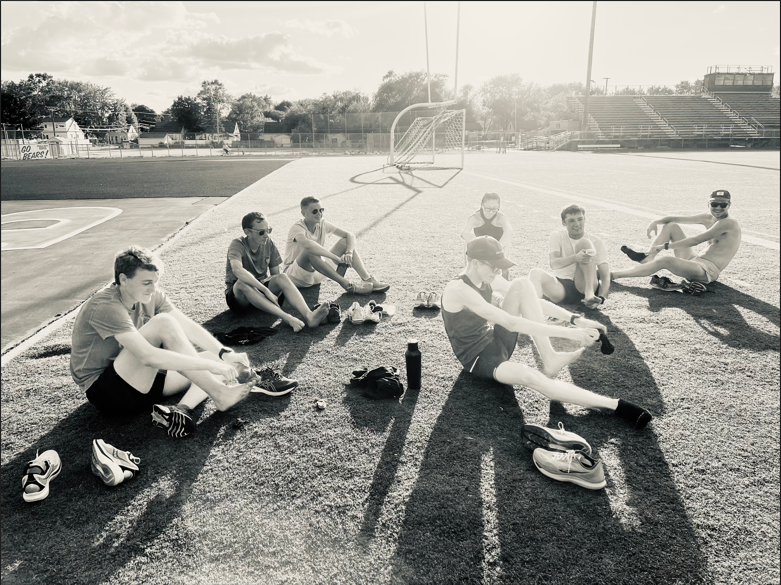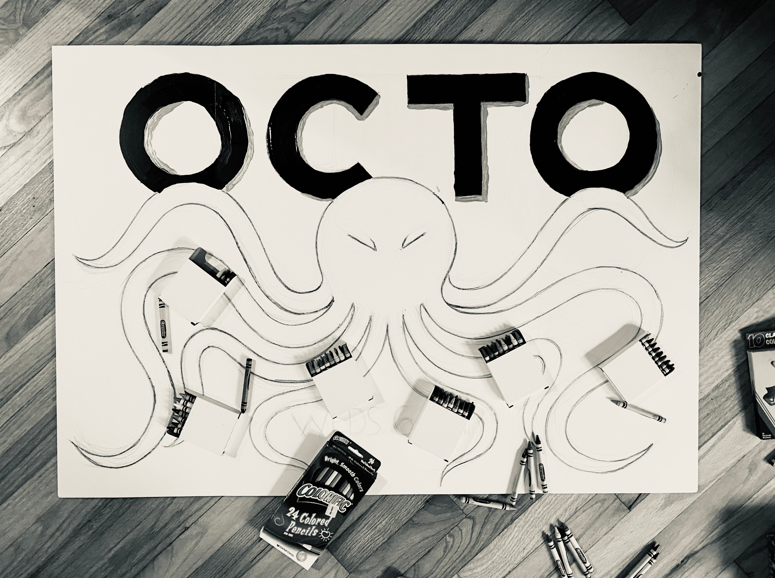The Debrief. Vol 1.0
The Debrief. Vol 1.0
T-Dog’s Massive Half PB
Workout of the Week (8.17)
VanEgmond’s 3K Time Trial
Among dedicated runners…
… the week always starts on Monday.
Whether it’s mass or the church of the long run, Sundays are capstone days, signing off a week of training.
Sometimes, it’s just a slow jog with friends; other times it’s hard hill work in the backcountry.
But, on very special Sundays, it’s a massive PR. This past Sunday, T-Dog ran a [1:25] half marathon with an official finishing time of [1:26]. This is a massive new personal best from a year ago [1:33]. In this edition of The Debrief., he shares with us his very own post-race debrief.
Race Debrief: The Kensington “13.2”
—T-Dog’s Massive Half Marathon New PB
The Kensington “13.2”
By: T-Dog
Back in May, I made the tough decision of planning to run the Kensington Half Marathon at the end of July. Remembering how difficult those hills were in high school cross-country, I thought it would be a good challenge; also, there weren’t many other local candidates. Moreover, I wanted the opportunity to test my late-summer fitness and shatter my PR of 1 hour and 32 minutes from a year earlier. I was expecting–and hoping–to run around 1 hour and 28 minutes for this race.
Pre-race Routine
The night before the race, I ate a large bowl of beef pho. Pho, for those who are unfortunate enough to be unfamiliar with it, is a Vietnamese soup containing rice noodles, herbs, and some sort of meat. You’ll likely have to make the drive down to Madison Heights to get a good bowl of it. I had eaten pho for dinner the previous two days as well. This dinner plan (i.e., eating the same thing for dinner three days straight) was executed to ensure that I would not have any unforeseen gut issues on race day (and I didn’t). I managed to fall asleep to a YouTube video around 10:30 or so and woke up around 5. I got to Kensington Metropark at around 5:45, an hour and a half before the race start time. I got a 1.5-mile warmup in at 6:15 and started consuming a pack of Maurten 320 around 6:35 or so. I got four sets of strides in (I couldn't find somewhere flat nearby to do them, so I probably looked a bit goofy) at 6:45 and finished consuming the Maurten around 6:55. I also planned on carrying a couple of packets of Maurten gels with me during the race. I felt ready to go!
The Start
I started the race a couple of minutes after 7:15. I was anxious to get going. The first mile felt very easy (it was a net decline) and passing a bunch of people got me pumped up. I clocked in at 6:15 for the first mile. I knew that I wasn’t going to run an hour 22-minute half, so I decided to take the second mile easy and ran it in 6:57. After the second mile, I really started to settle into the race. I decided to maintain my average pace (a 6:36) for miles three and four. I ran mile three in 6:33 and four in 6:34, so I was right on my adjusted schedule. I also started eating my first gel around the end of mile four.
The Toughest Miles
Before the race, I was expecting miles five and eight to be the most difficult (due to the largest overall elevation gain). This expectation was correct, as I took the gradual climbs of mile five slowly and finished the mile within 6:43. Miles six and seven were fairly straightforward and I ran them in 6:25 and 6:32, respectively. Mile eight was certainly a challenge, but because I went into the race expecting it to be one, the reality of running it wasn’t horrible and I ran it at 6:46. My first gel likely started kicking in while I was running it, so I am sure that helped. Speaking of gel, I started eating my second gel during mile eight.
Finishing Up the Race
I felt surprisingly good while I was running miles nine through 12. This was a result of the combination of a ton of Maurten, adrenaline, and optimism about performing much better than expected in the race. I hovered around a 6:33 pace for the four miles. I felt pretty good at the start of mile 13 (considering it was mile 13), so I decided to pick up the pace. It was tough and a gradual climb, but I managed to clock in a 6:13. As for the final .1, I missed the exit for the finish and spent a good 10 seconds freaking myself out while I was looking around for it. I ended up finishing in an hour 26 but would have finished in an hour 25 if I hadn’t missed the finish.
What I Did Well
I felt that I timed my warmup, strides, and consumption of the Maurten powder and gels fairly well. Also, I felt that 6:33 miles were a good average mile pace to hit, and I adjusted to that general pace well after the first two miles. Lastly, I ran a lot faster than I thought I would (by three minutes, if you look at my Strava half PR and not the race results), which is always a positive thing.
What I Didn’t Do Well
I probably should not have gone to a house music show the day before the race… It helped excite me, but I also had a few drinks and a bowl of tortilla chips (it was in Mexicantown). Also, I probably could have run mile one in about 10 fewer seconds. 6:15 was a little too fast. I adjusted to starting out a bit too fast well, but I could’ve shaved quite a bit of time off my second mile and a couple of seconds off some of the later miles if I had run it in 6:25. Lastly, I should have memorized the “tricky” parts of the course before the race. If I had done so, then I would have finished 40 seconds earlier.
Will I do this course again? Probably not, but it left me in a good mood so I’m appreciative of it for that.
Workout of the Week【8.17.22】
Purpose & Intent
For experienced and new runners alike, workouts A and B respectively engages fitness at Half Marathon Goal Pace (HMGP) and VO2max Pace (vVO2max). For both, a well-executed VO2 priming warm-up helps to facilitate the runner to engage these thresholds with maximal efficiency. See comments for detailed explanations.
*Unless explicit, all paces imply /200m time; full pacing table below.
*Repeats imply standing rest, Intervals involve jogging recovery, and Alternations are continuous.
Workout A: 1K Repeats (HMGP Fitness Maintenance)
5x 1000m Repeats
Performed @HMGP
⁃ 2-3min rest between sets
Workout B: 30-30s Intervals (VO2max Development)
2x [10x 30s/30s] Intervals
On: 30s @MP
Off: 30s jogging pace
20x intervals total (20min)
10x intervals per set
5min rest between sets (standing)
Pacing Table
Comments
Workout A: This is a classic fitness-maintenance workout where the runner accrues 3mi of work at Half Marathon Goal Pace (HMGP). Exactly 2min of rest is programmed to allow for a slight muscular recovery without dampening the athlete’s metabolic up-regulation. If pacing for each set is identical, the overall RPE should peak within the first two rounds, with the remainder at or slightly below their predecessor(s). Workout B: Named after the French professor who refined this protocol, Billat 30-30s are a powerful tool for VO2max development. Professor Billat's goal was to design a protocol that accrues maximum time at vVO2max pace without the significant acidosis nor injury risk associated with such paces. Here, her key insight was that 30s of jog recovery was just enough time for a short, muscular rest while not being too long so as to cause the settling of VO2 kinetics. In this context, the athlete effectively keeps his or her ramped-up energetic state while sneaking in a small recovery before taking off. This allows for more training at vVO2max pace without fatiguing the system, leading to better recovery time and consistency.
Workout B: Named after the French professor who refined this protocol, Billat 30-30s are a powerful tool for VO2max development. Professor Billat's goal was to design a protocol that accrues maximum time at vVO2max pace without the significant acidosis nor injury risk associated with such paces. Here, her key insight was that 30s of jog recovery was just enough time for a short, muscular rest while not being too long so as to cause the settling of VO2 kinetics. In this context, the athlete effectively keeps his or her ramped-up energetic state while sneaking in a small recovery before taking off. This allows for more training at vVO2max pace without fatiguing the system, leading to better recovery time and consistency.
VanEgmond’s 3K Time Trial
On Friday, July 29, friend of Run [OCTO] Matt VanEgmond performed a 3K time trial with part of the team. With a final time of 9:29.63 (5’05” pace), VanEgmond had the following to say:
“The OCTO crew was awesome to meet up with for a time trial. A bunch of guys showed up to help me out with pacing and everyone was ready to run hard and have fun! Seems like an awesome group that has struck the balance between running hard and enjoying the process!”







